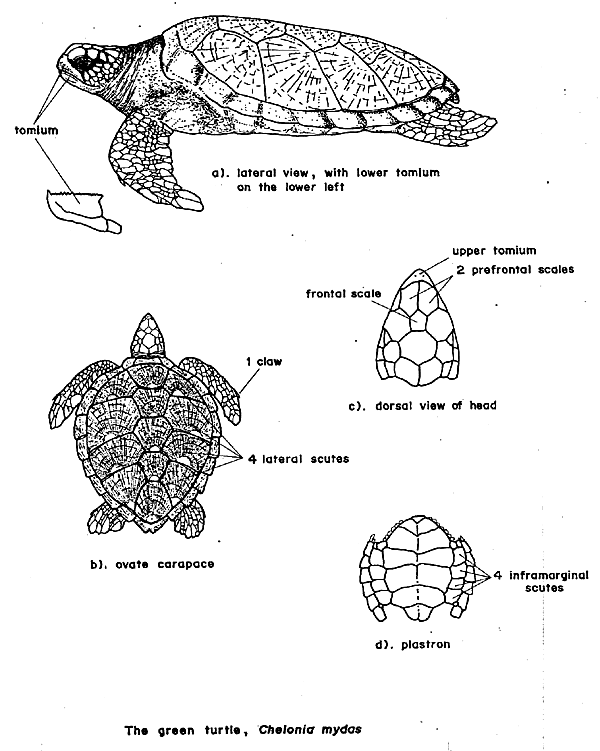
Behind the Scenes
The Biology & Natural History
One of the most graceful and dignified creatures of the ocean is known as the Green Sea Turtle. Famously debuted in the children’s film, Finding Nemo (2003), the sea turtle has since captured the hearts of people young and old. Sea turtles are known by their scientific name as Chelonia mydas, and they reside in the reptile grouping of species such as snakes and lizards. The scientific name comes from their inner layer of light green insulating fats, ‘Chelonia’ refers to hard shelled species (oceana). These fascinating creatures can grow up to approximately four feet in length, making them the largest species in the turtle family. They have been around since the time of the dinosaurs and even live as long as 80 years old, almost the same as the average human. Sea turtles tend to thrive in seagrass beds where the water is somewhat shallow and warm, and there is a lot of seagrass for them to feed on as they are mainly herbivores.
Turtles are fascinating as they stride so delicately across the open ocean. Though they migrate long distances, green sea turtles prefer tropical and subtropical environments where the water is a tad warmer for their liking. Females in particular, seasonally return to their sacred beach where they lay their eggs, in most sea turtles this is the same exact spot every year. The mother turtle locates this beach using magnetic signals within the sea, as well as the ocean currents.


As many already know, turtles have a massive shell encompassing their soft skin body. The shell allows for a speedy streamline form in water, and acts as a major source of protection for the turtles, protecting them from predators like birds, crocodiles, whales, and sharks. Though the sea turtles are unable to bring their limbs into the shell with them when in danger, their skin is actually scaly and tough so that it retains the ability to withstand heavy forces. Large appendages known as fins assist them in their tedious trek across the open waters. These fins allow the turtle to swim to speeds up to 15 miles per hour. Turtles have one fin toward the behind; this fin acts as a rudder to steer and slow the turtle when needed, especially during times of migration. Green sea turtles migrate thousands of miles in a given time, sometimes across an entire ocean. They migrate in order to find food sources such as a jellyfish and seagrasses and to relocate beaches previously used for laying eggs. Migration is almost always occurring in between times of feasting and times of nesting.
To graze on luscious seagrasses, or munch on a drifting jelly, sea turtles, use a sharp body part known as a beak. The turtle’s beak is quite similar to that of birds; they are both composed mainly of keratin, the substance found in human nails. In birds, the beak can differ quite vastly between species, yet in turtles, no matter the habitat or diet, the beak generally remains quite consistent. Turtle’s beaks are used to cut grass or to rip and tear sea jellies, prior to consumption.
Turtles tend to remain in the open oceans until it is time to nest, therefore there is not much knowledge of their behavior outside of nesting and mating. One enthralling fact known about the species, is that they are capable of remaining under water for up to five whole hours. Although at the moment there is not much information regarding the behavior of the species, scientists are developing new techniques as we speak.